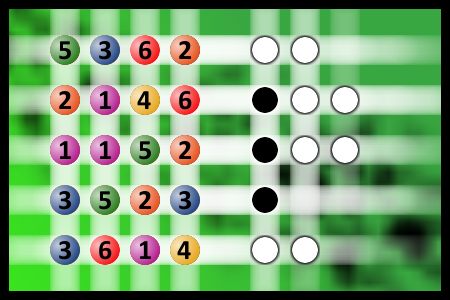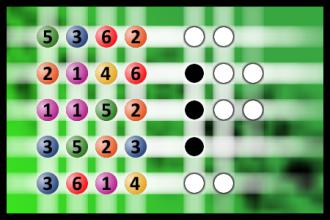Which is a winning combination of digits?
The computer chose a secret code (sequence of 4 digits from 1 to 6). Your goal is to find that code. Black circles indicate the number of hits on the right spot. White circles indicate the number of hits on the wrong spot.Correct answers: 58
The first user who solved this task is Sanja Šabović.
#brainteasers #mastermind

Ten Witch Jokes for Halloween
Q) Why do witches wear name tags?
A) So they will know which witch is which.
Q) What do you call two witches sharing an apartment?
A) Broom-mates
Q) What is a little witch's favorite subject in school?
A) Spell-ing
Q) How does a witch tell time?
A) She looks at her witch-watch.
Q) Why did the witch give up fortune telling?
A) Because there was no future in it.
Q) What is the difference between a witch and the letters "M, A, K, E, S?"
A) One makes spells and the other spells "makes."
Q) What did the witch serve her friends who dropped in at dinner time?
A) Potluck
Q) How do you make a witch itch?
A) Take away the "w."
Q) Why is a witch's face like a million dollars?
A) It's green and wrinkly.
Q) What do witches use on their hair?
A) Scare spray.

